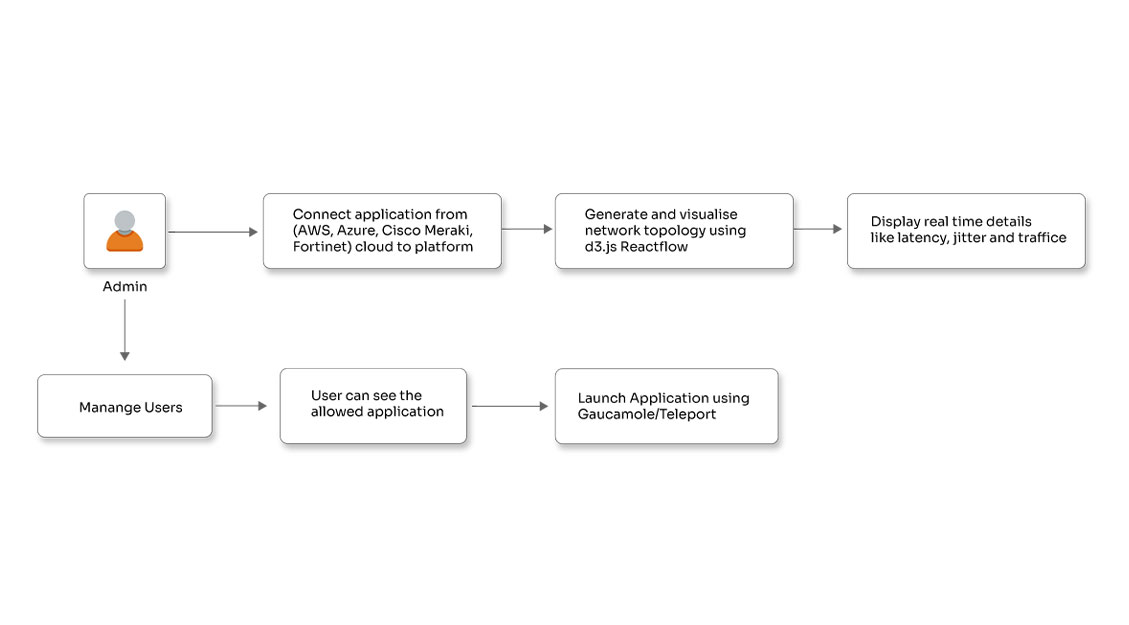Cloud Governance for Cloud Coherence

Posted By
Chaitanya Jawale

"Cloudify everything" seems to be the mantra for major enterprises. The adoption has become the new normal, and the trends of IT expenses show that cloud is one of the fastest-growing segments. According to Oracle's cloud predictions, 80% of all enterprise workloads will move to the cloud by 2025. The prime reason behind the numbers is the convenience the cloud offers to businesses. No matter which cloud platform you prefer, it has a lot to offer in return. But while migrating your workloads to the cloud, it is crucial to manage the security aspects. The higher the cloud adoption rate, the greater will be the responsibility to invest wisely. This is where cloud governance comes into the picture. Cloud governance defines and creates policies to control costs, minimize security threats, accelerate deployment, and improve the efficiency of the cloud environment.
It's imperative to have a robust cloud governance framework to avoid the known threats and prepare you for the potential ones. Governance practices can be broadly categorized into three categories: Operations, Finance, and Risk & Compliance. However, there aren't any standard governance policies that can be directly adopted into your cloud. According to the type of industry and business requirements, you may need to modify your existing policies or create new ones. Organizations must define a clear governance strategy to make the most of their cloud framework. And for efficient strategy, it is essential to understand the governance models.
What is Cloud Governance?
Cloud governance is the framework of policies, processes, and tools that organizations use to manage and optimize their cloud environments effectively. It ensures alignment with business goals, enhances cloud security, and drives cost optimization by establishing clear guidelines for resource usage, compliance, and operations. By integrating IT governance principles, cloud governance enables seamless cloud management, reducing risks and improving operational efficiency.
What are the three pillars of a cloud governance model?
The three pillars of any cloud governance model include IT process integration, continuous compliance, and financial management. Let's discuss them one by one.
-
IT process integration: Cloud governance is referred to as an extension of IT governance to the cloud part. For effective cloud governance, you need your IT processes to be fully integrated, ensuring the extension of existing governance processes into the cloud. The best way to ensure this is by enabling incident and problem management, enforcing license compliance, and federating your Configuration Management Database (CMDB).
Discover how Opcito's CloudOps services can streamline your IT process integration for effective cloud governance
-
Continuous compliance: Compliances ensure uniformity and standardization across processes, infrastructure, security policies, and guidelines established for a governed process by the parties with authority. Compliance standards vary according to the type of industry, such as CIS (Center of Internet Security Controls), HIPAA (Health Insurance Portability and Accountability Act), PCI DSS (Payment Card Industry Data Security Standard), and more. For hassle-free operations, you will need to enforce standards, confirm regulatory, operational, and security compliances, perform regular audits and integrate change management to drive smooth and compliant transitions.
-
Financial management: Financial management is a core pillar of a robust cloud governance framework. Integrating IT financial management is crucial for tracking the cost of migrating workloads to the cloud. You can incorporate financial transparency in your cloud environment by enabling show-back or chargeback, utilizing usage accounting, and actively managing your providers, resources, and consumption.
What are the top challenges without a cloud governance strategy
Without a robust cloud governance strategy, organizations face significant challenges that can hinder cloud adoption and operations. These include uncontrolled costs due to unmonitored resource usage, heightened security risks from inconsistent configurations, and non-compliance with industry standards like HIPAA or PCI DSS. Additionally, lack of governance leads to operational inefficiencies, such as configuration drift and delayed deployments, undermining the benefits of cloud operations. Effective risk management through governance mitigates these issues, ensuring cloud compliance and cost optimization.
The five disciplines of cloud governance
If a technology platform or business process is going through a transformation, it has a risk factor. Not only that, your day-to-day IT operations have a certain level of risk attached to them, however familiar and easy they may look. Cloud governance teams usually take care of these and ensure risk-free cloud adoption and operation. While discussing cloud governance, you might be interested in knowing the common disciplines that organizations must follow for hassle-free cloud adoption and operation. These disciplines influence the decisions made for a proper level of automation and enforcement of corporate policy across all cloud platforms.
Let's see the five cloud governance disciplines introduced by the Microsoft Cloud Adoption Framework (CAF) governance model, irrespective of the platform chosen.
- Cost management
Cost management is perhaps the most crucial cloud governance discipline. A common concern for all cloud adopters is expenditure and controlling costs. It is pretty challenging to strike a perfect balance between performance requirements and associated costs. This makes it essential to develop policies for the optimum utilization of available resources across all cloud platforms.
This discipline serves the primary purpose of identifying potential risks in the cloud environment related to IT spending and providing IT teams with risk mitigation guidance. The teams responsible for deploying and managing cloud resources should be involved in the policy formation processes to ensure effective cost management.
- Security baseline
Security anywhere, on-prem or cloud, is always the most critical factor. Having a security baseline is essential for the success of your cloud initiatives. Making the right security choices, the best tools and apt policies address most of your security concerns. Good governance policies implemented across a network, data, and asset configurations with the defined security baseline guarantee security.
Security baseline discipline makes sure the technical specifics & guidelines and security constraints are consistently applied to cloud environments. It is crucial to involve SecOps teams, especially those implementing networking, encryption, and identity services, to decide security baselines.
Explore Opcito's cloud security and monitoring solutions and insights on securing IaC implementations to strengthen your cloud governance framework.
- Identity baseline
Identity has become the new control plane in cloud environments. It acts as a critical security perimeter and the core mechanism supporting access control that prevents possible breaches. The identity baseline discipline ensures consistent application of identity requirements and authorization across the cloud. IT and business teams responsible for implementing identity management solutions should be involved in the discussions to create policies, decisions, and processes.
- Resource consistency
Resource consistency is the discipline that ensures consistency across resource configurations and related operations. Consistent resource configuration is a vital steward for cloud operations. Governance tooling can help consistently configure resources to control the risks associated with onboarding, drift, recovery, and discoverability.
- Deployment acceleration
Deployment acceleration aims to streamline new workloads into the cloud by making it easier to work within the environment. Governance practices get enhanced through centralization, standardization, and consistency in deployment and configuration approaches. It helps accelerate deployment activities through a cloud factor that can be created when provided through cloud-based governance tooling. The deployment acceleration discipline includes planning, building, adopting, and operating phases of implementing a cloud solution.
Cloud opens the door to many opportunities. However, it is vital to follow the best practices related to CloudOps. Having a well-defined governance strategy helps organizations reduce the risks associated with the cloud and facilitate smooth operations. Evidently, the cloud governance automation software will still take care of most of the work; providing them with valuable inputs is an essential aspect. The cloud governance disciplines will manage costs, security, and deployments in the most effective way possible. Talk to our cloud experts today to know which strategy best suits your cloud and define well-governed policies.
Related Blogs




















